Types of Sliding Door Tracks: Which Works Best With My Door?
Keep your door installation on track by choosing the right hardware


Sliding doors are a space-saving solution that can give you back some usable square footage in a smaller room. It’s not just about the door, though—the track matters. Tracks impact the way a sliding door looks and functions. This guide covers eight types of sliding door tracks, including single, double, triple, bypass, box, flat, concealed, and pocket, so you can choose the best option for your home.
1. Single Track (Mono-Rail)

Single tracks, also known as mono-rails, are the most basic type of sliding door track and are one of the most common. This door track consists of a single rail that runs along the top or the bottom of your doorway, allowing the door to slide open and closed, stacking over a fixed panel.
Though this style of track is simple to install and operate, mono-rail doors can partially block a doorway. Only one side (the sliding panel) opens, while the fixed panel is stuck in place. Nonetheless, they remain a popular option for closets and single entryways.
| Pros | Cons |
|---|---|
| Easy to install | Only half of the doorway is accessible |
| Sleek and space-saving | Needs a blocking bar for security |
| Better at retaining heat than other designs | Not as soundproof as other options |
Best for: Single entryways like closets or small balconies
2. Double Track (Duo-Rail)

Double tracks, or duo-rails, consist of two separate rails. Both door panels slide back and forth along their designated track (as opposed to the single track, which has one moving panel and one fixed panel). Double rails have a mechanism on the top and bottom to hold the door in place.
This type of track allows for greater versatility and accessibility. Because you’re not limited by a fixed panel, you can have a wider opening. Some configurations include two-panel doors that slide outward (akin to French sliding doors).
| Pros | Cons |
|---|---|
| Allows for a larger opening | Tougher to install and maintain |
| Versatility and flexibility | Requires more space |
| Better security | Prone to leaks and drafts |
Best for: Larger doorways, open-concept spaces, and patios
3. Triple Track (Three-Rail)

Three-rail sliding door tracks consist of three parallel rails that allow doors to slide open and closed, stacking on each other to maximize open space. You’ll find this type of track on telescoping patio doors, with a mechanism on the top and bottom for stability. It’s ideal for large openings like oversized patios, where it lends itself to indoor-outdoor living concepts.
Remember that more moving pieces can lead to more sliding door repairs. The components wear down over time, making triple-rail tracks more challenging to maintain than a standard single-rail track.
| Pros | Cons |
|---|---|
| Allows for oversized openings | Tougher to install and maintain |
| Great for indoor-outdoor living concepts | Requires more space |
| Greater accessibility | Prone to leaks and drafts |
Best for: Glass wall patio doors and ultra-wide closets
4. Bypass Tracks
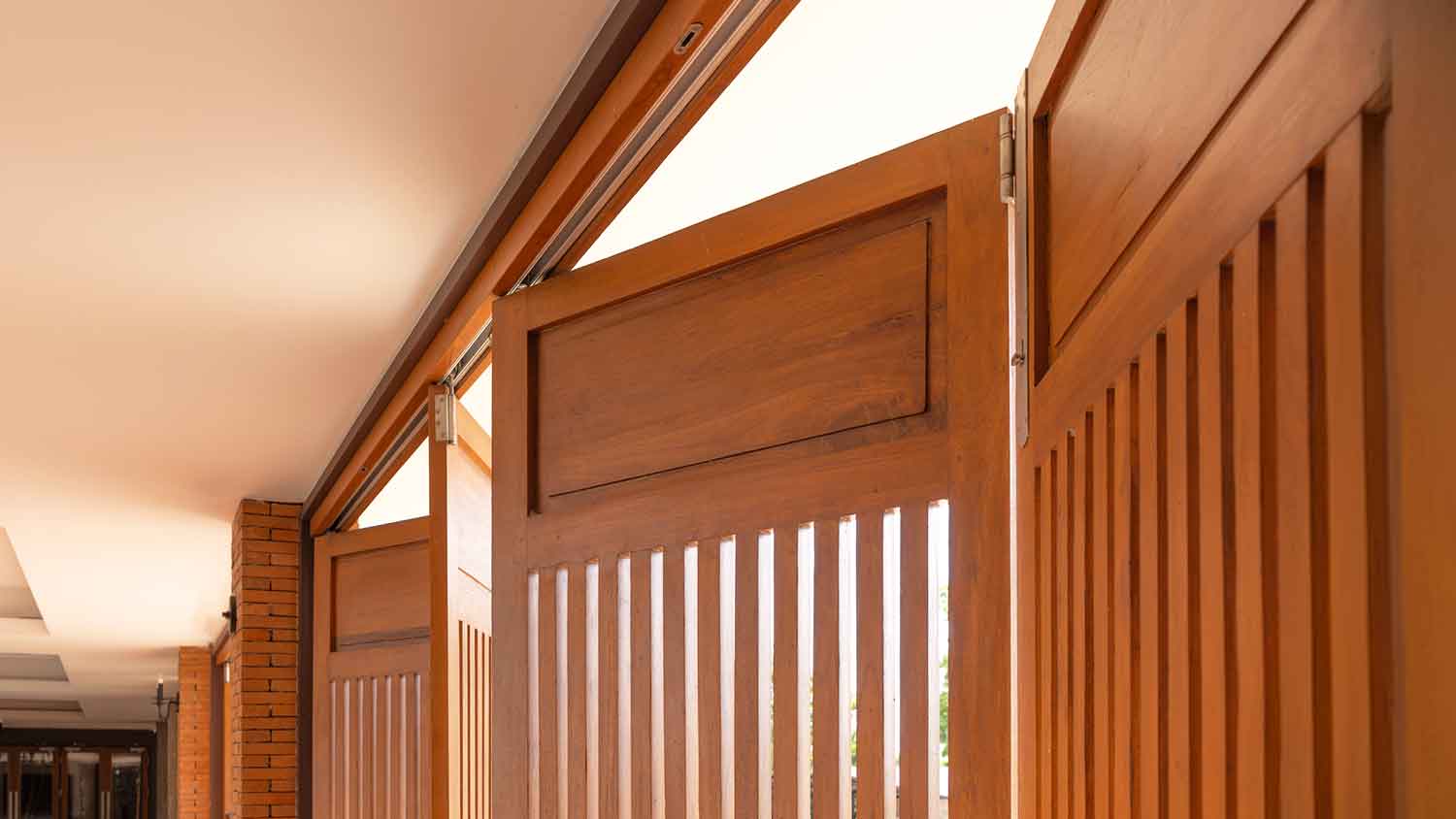
Bypass tracks can have two or more rails. The main hallmark is that the rails are parallel to one another, so panels can stack on top of each other as they slide open. This type of track is a space-saving alternative to larger accordion doors. You’ll commonly find it on external patio doors, where it creates a wall of windows that can stack open, or on oversized closets.
Because bypass tracks are prone to misalignment, you’ll want to hire a professional door installer—especially if it’s an exterior door.
| Pros | Cons |
|---|---|
| Allows for bigger openings | Tougher to install and maintain |
| Space-saving solution | Takes up more space than a single track |
| Can create a functional wall of windows | Prone to misalignment |
Best for: Larger doorways
5. Box Track
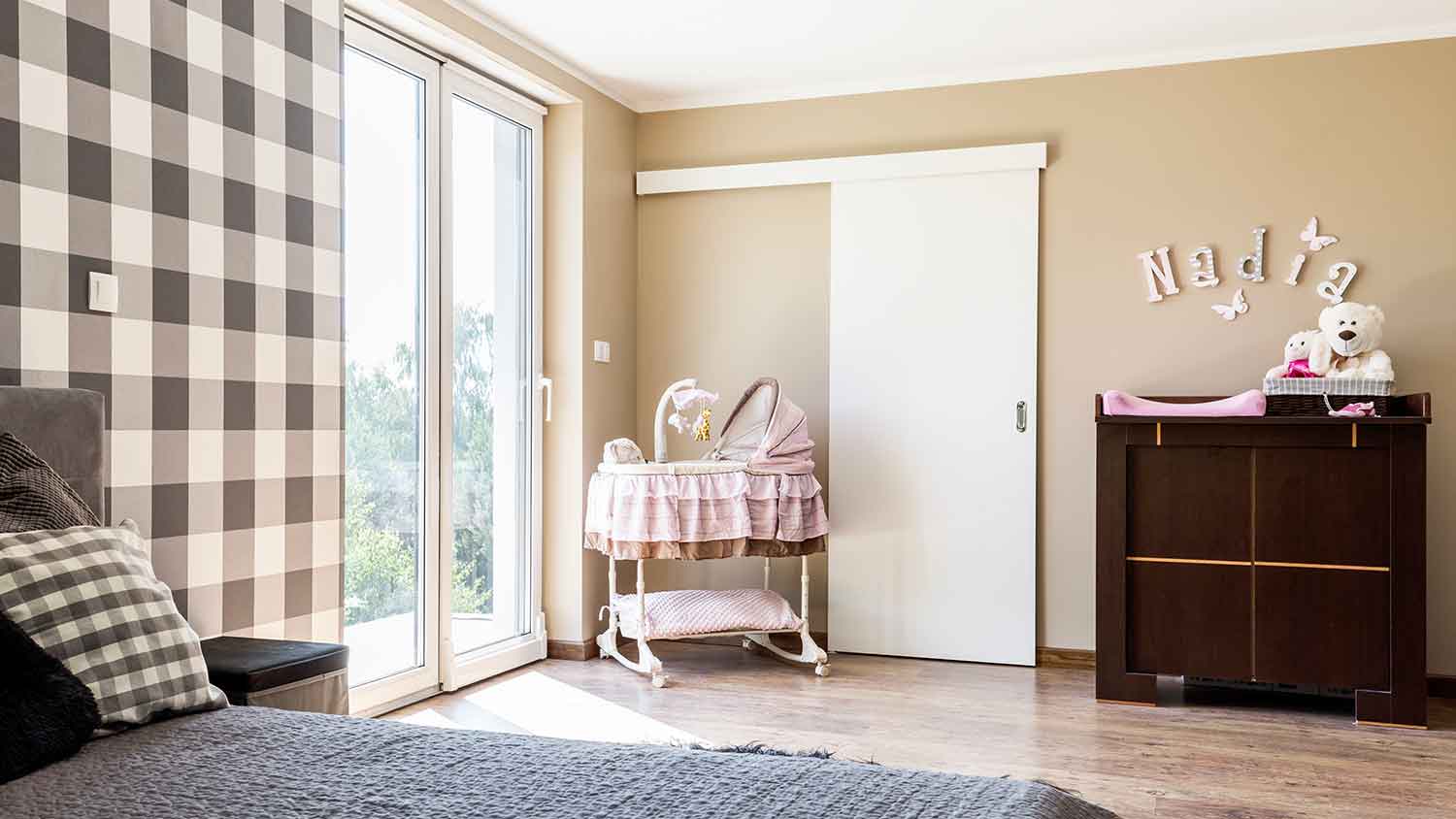
The rail and rollers are enclosed in a box-like structure in a box track sliding door. The hardware is hidden behind a more visually appealing facade mounted above a doorway. Box tracks became trendy in residential interiors alongside sliding barn doors, but you’ll also find them in commercial and industrial applications. This type of track is especially sturdy, with some models holding doors weighing over 1,000 pounds.
| Pros | Cons |
|---|---|
| Trendy rustic or industrial look | Requires space above a doorway |
| Supports heavy-duty doors | Requires wall space for full door functionality |
| Great for commercial or industrial use | Visible above the door |
Best for: Barn doors, heavy-duty doors, and commercial or industrial settings
6. Flat Track
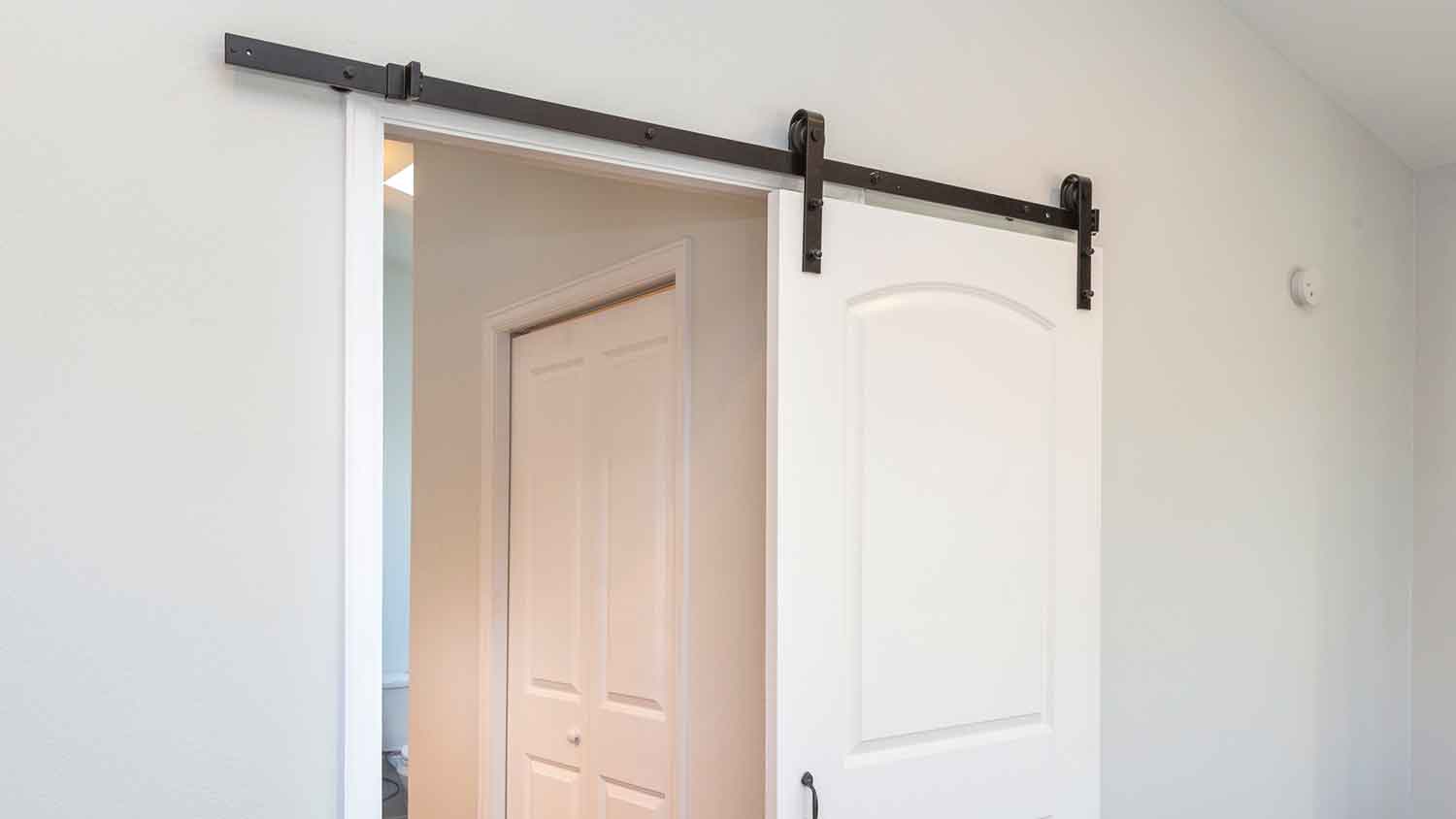
Flat tracks are another type of top-mounted track used with barn-style doors in residential settings. Rather than trying to hide the hardware, this type of track turns it into a design feature. The roller sits on top of the track instead of inside of it. The track itself is thinner and more streamlined than a box track. Depending on the design, these can accommodate bypass sliding doors that stack over each other.
| Pros | Cons |
|---|---|
| Thin, streamlined look | Not suitable for heavy-duty doors |
| Unique design aesthetic | Visible above the door |
| Greater accessibility | More expensive |
Best for: Barn doors, shutters, cabinets, and commercial spaces
7. Concealed Track
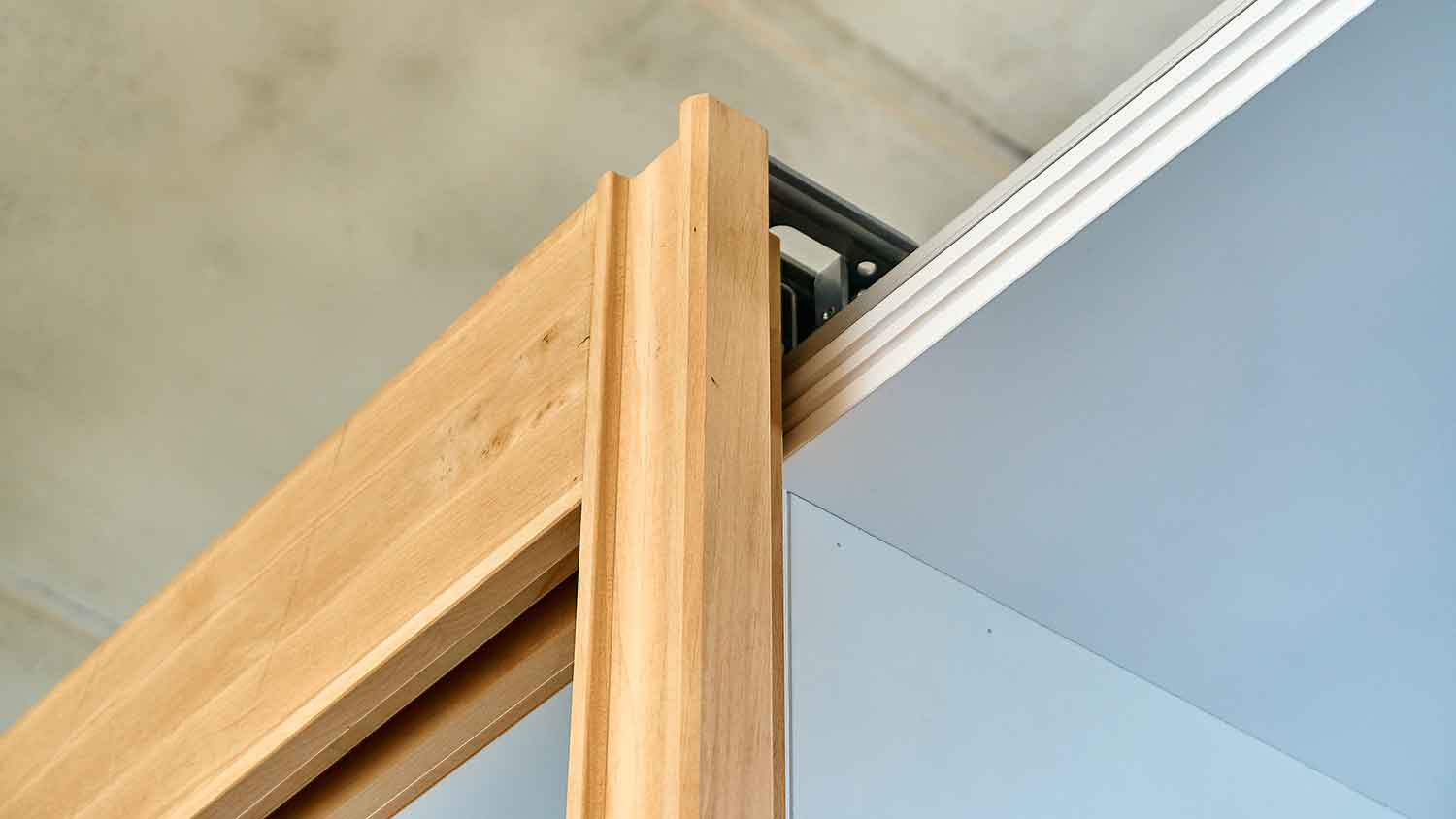
A concealed track hides the functional parts of your sliding door behind the door itself. This makes your door look like a free-standing element, as if it slides back and forth on its own. Most commonly, concealed sliding door tracks are mounted on the top of your door, with the roller mounted on the top of the doorway. You’ll see this as an alternative to box tracks and flat tracks.
| Pros | Cons |
|---|---|
| Clean, modern design | Requires space above the doorway for rollers |
| No visible hardware | Requires wall space for full functionality |
| Versatile, decorative door options | Interior use only |
Best for: Barn doors, modern homes, interior entryways, and closets
8. Pocket Door Track
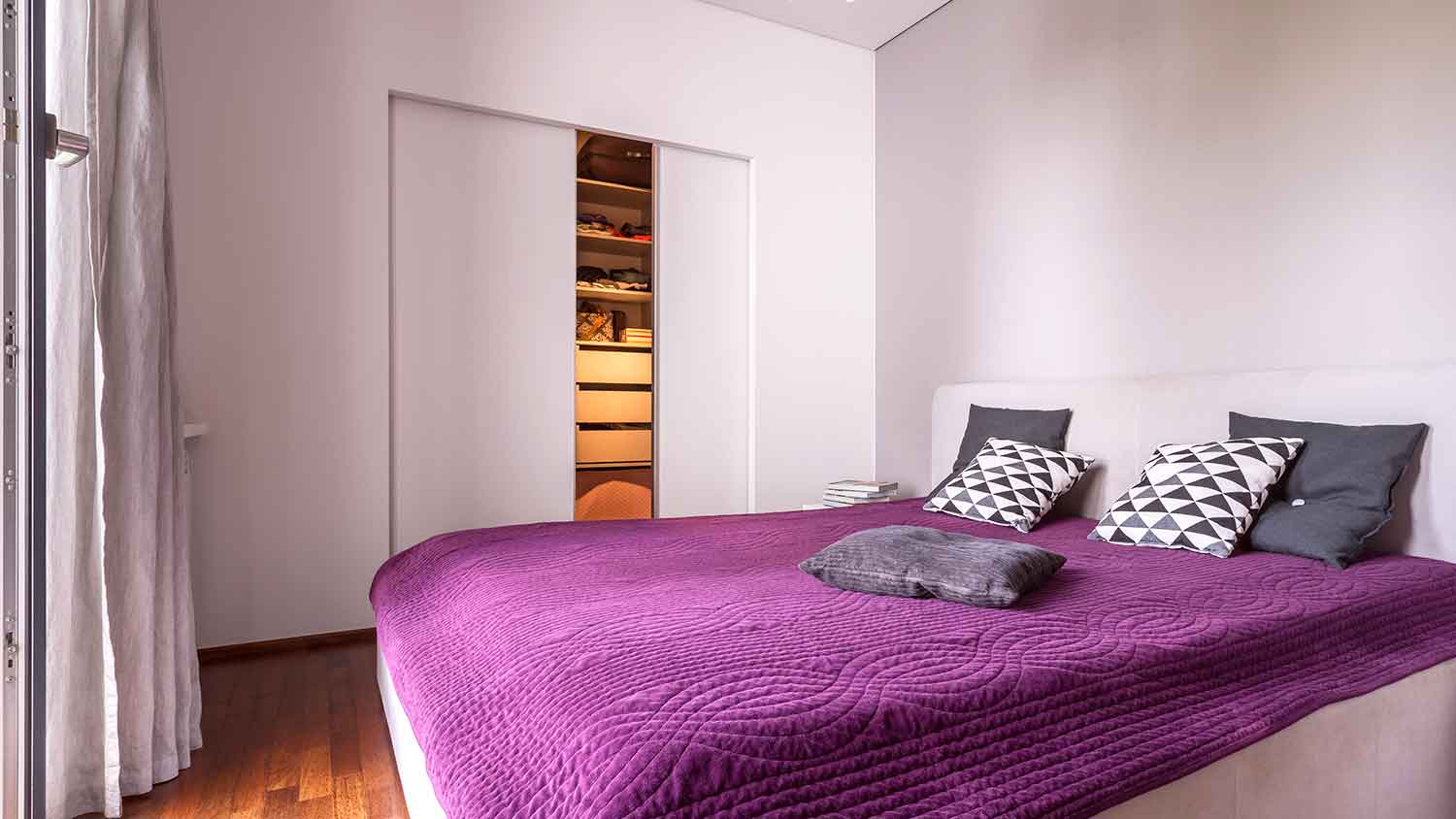
If you have pocket doors that slide into a hidden cavity in your wall, you’ll need to use a pocket door track. This track has the correct dimensions to fit inside the wall and allow the door to open and close completely. Pocket doors are a go-to solution for small spaces that cannot accommodate other types of doors, but they won’t work with every type of wall.
| Pros | Cons |
|---|---|
| Efficient, space-saving design | Complex installation |
| Full use of the entryway | Not suitable for all wall types |
| Versatile, decorative door options | Interior use only |
Best for: Small indoor spaces, like bathrooms and laundry rooms
How to Choose a Sliding Door Track
Consider a few factors before choosing a track for your sliding doors. Many manufacturers require specific tracks for specific models and not every track works with every door. A local sliding glass door contractor can help you choose the right fit and ensure it’s properly installed. While looking at different options, keep the following in mind:
Configuration of the door: The track needs to suit the layout of the door and entryway. Some entryways won’t have adequate space for barn doors or bypass tracks with multiple sliding panels.
Interior or exterior: Certain tracks (like bypass tracks or mono-rails) work well with exterior doors. Other tracks (like pocket tracks, concealed tracks, or flat tracks) are best for indoor use only.
Security: Certain tracks are more secure than others. For example, sliding doors with single-rail tracks can be reinforced with blocking bars to help prevent break-ins.
Concealed or visible hardware: Some sliding door tracks are more visible than others. Box tracks and flat tracks tend to be the most prominent, while concealed tracks and pocket door tracks fly under the radar.
Weight: Make sure the track you choose can support the weight of your door. Glass doors are heavy, and tracks are rated for a specific weight range. You can choose a heavier-duty variety when necessary.
Soft-close add-on: Some tracks allow for a soft-close add-on. This small mechanism fits inside the track and prevents the door from slamming closed, damaging the hardware, or breaking the glass.



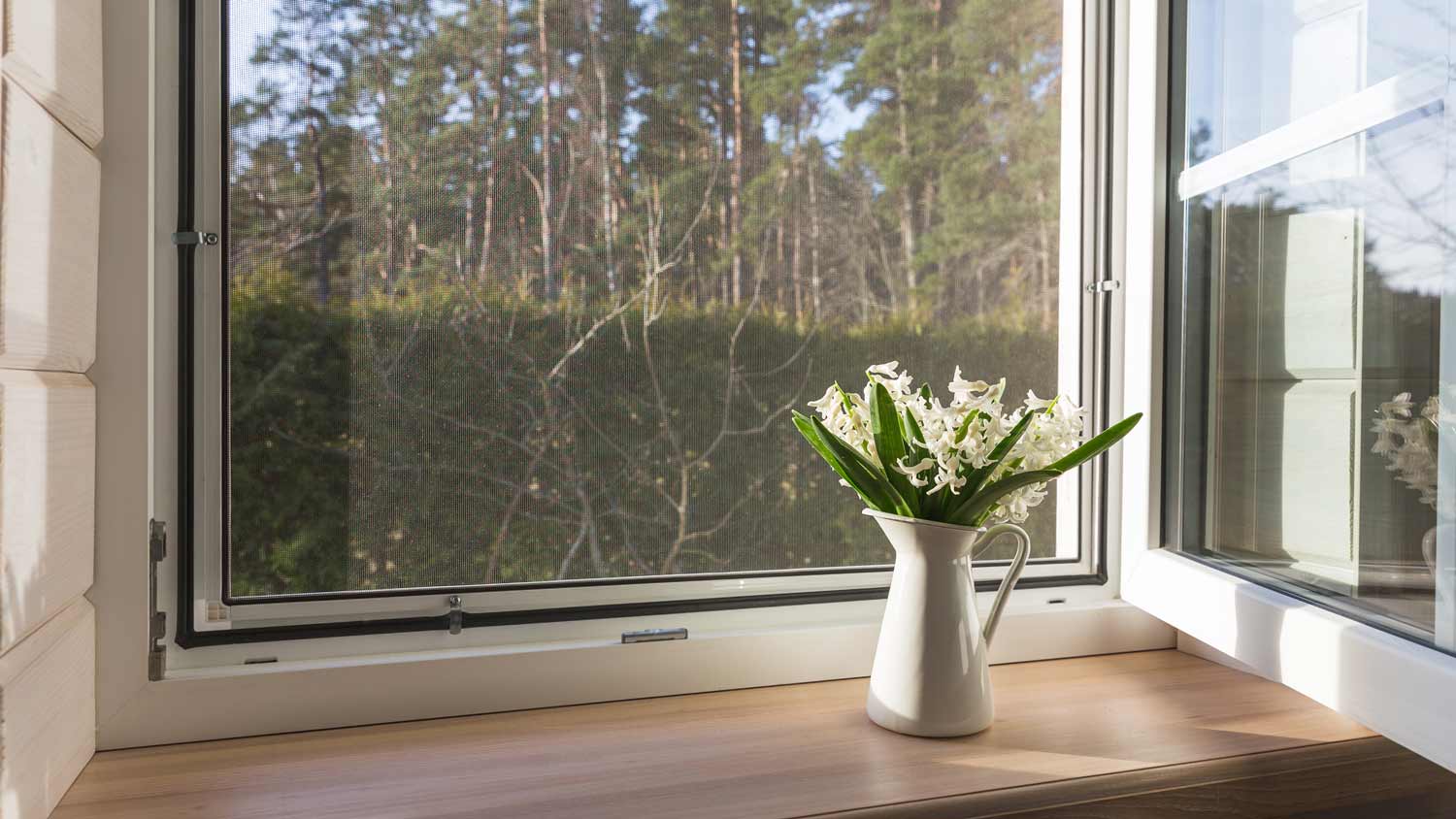

- Why Water is Leaking Through Your Sliding Glass Door and How to Stop It
- 7 Types of Interior Doors to Use in Your Home
- 6 Track Lighting Tips That’ll Make Your Bathroom Shine
- How to Secure a Sliding Glass Door: Full Guide
- 23 Types of Doors for Inside and Outside Your Home
- 6 Essential Sliding Glass Door Parts and How They Work
- 9 Tips to Make Installing a Pocket Door in Your Home Easy
- 10 Unique Ideas for Interior Door Designs
- Sliding Glass Door Insulation: Tips and Tricks
- Here’s What to Know About Standard Sliding Glass Door Sizes










